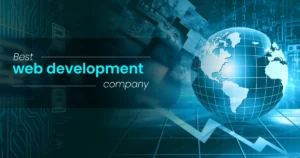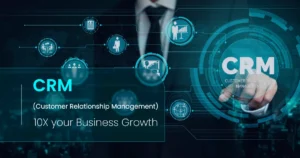Difference Between E-Commerce and Dropshipping
The rise of online retail has transformed the way businesses operate, opening up countless opportunities for entrepreneurs. However, two terms that often create confusion are eCommerce and dropshipping. While both business models operate within the same digital space, they have distinct characteristics, operational structures, and challenges. In this blog, we will explore the key differences between eCommerce and dropshipping, helping you make an informed decision on which business model might be right for you.
What is E-Commerce?
eCommerce (electronic commerce) refers to the buying and selling of goods or services using the internet. It encompasses a wide range of activities, including B2B (business to business), B2C (business to consumer), C2C (consumer to consumer), and C2B (consumer to business) transactions. In an eCommerce business model, a company typically owns the inventory, manages the stock, and handles the shipping process.
Key Components of eCommerce:
- Inventory Management: Traditional eCommerce stores purchase products in bulk, store them in warehouses, and sell them to customers.
- Sales Channels: eCommerce businesses may sell through their websites, marketplaces like Amazon and eBay, or social media platforms.
- Logistics: The business is responsible for managing shipping, packaging, and returns.
- Customer Service: A strong focus on after-sales support, including handling complaints, refunds, and returns.
eCommerce businesses are commonly found in sectors like fashion, electronics, home goods, and more. To succeed, a business must invest in inventory, warehousing, order fulfillment, and robust customer service.
What is Dropshipping?
Dropshipping is a specific type of eCommerce model where the store owner doesn’t keep any inventory. Instead, when a customer places an order, the business buys the product from a third-party supplier (usually a manufacturer or wholesaler), who then ships the product directly to the customer. The store owner never handles the product directly.
Key Components of Dropshipping:
- No Inventory Management: The business owner doesn’t need to worry about storing or handling products.
- Supplier Network: The success of dropshipping relies heavily on partnerships with suppliers and manufacturers.
- Lower Operational Costs: Since there is no need for inventory management, dropshipping is relatively low-cost to start.
- Third-Party Fulfillment: Once a customer places an order, the supplier directly handles the shipment to the end customer.
Dropshipping is commonly used by entrepreneurs looking to start an online business without significant upfront investment. Popular products include gadgets, accessories, apparel, and niche products.
Key Differences Between eCommerce and Dropshipping
While eCommerce and dropshipping may sound similar, they have key differences in terms of inventory management, startup costs, control, and operational complexity.
1. Inventory Management
- eCommerce: In an eCommerce model, businesses purchase and store their own inventory. This means they have full control over stock levels and product quality, but it also comes with the responsibility of maintaining inventory, handling warehousing, and managing stock-outs.
- Dropshipping: The primary advantage of dropshipping is that the store owner doesn’t need to manage inventory. The third-party supplier is responsible for stocking and shipping products. However, this means the store owner has less control over stock availability and fulfillment speeds.
2. Startup Costs and Investment
- eCommerce: Setting up an eCommerce business typically requires a larger upfront investment. You’ll need to purchase inventory in bulk, set up a storage facility or warehouse, and establish a fulfillment system. Additionally, you’ll need to consider the cost of running a website and paying for various business expenses.
- Dropshipping: Dropshipping offers a much lower barrier to entry in terms of startup costs. Since you don’t need to invest in inventory or warehousing, you can start your business with minimal investment. This makes it an attractive option for new entrepreneurs or those on a tight budget.
3. Control Over Products and Branding
- eCommerce: With an eCommerce business, you have full control over product quality, packaging, and branding. You can create unique experiences for your customers, from custom branding to personalized packaging, all of which can build customer loyalty and increase repeat sales.
- Dropshipping: In dropshipping, you have little control over product quality and packaging because the supplier handles all of that. The products may also be generic or sold by multiple businesses, making it difficult to differentiate your store from competitors. However, some dropshipping suppliers offer branding services, though this is not the norm.
4. Profit Margins
- eCommerce: Profit margins in eCommerce tend to be higher than dropshipping because you purchase products in bulk and typically sell them at a higher price. This means you can also leverage economies of scale to negotiate better pricing with suppliers.
- Dropshipping: Since you buy products individually from suppliers at retail prices, profit margins are typically lower. The key to success in dropshipping is selling a large volume of products or finding a unique niche with a higher perceived value. You’ll also need to account for the fact that suppliers may raise their prices over time.
5. Shipping and Fulfillment
- eCommerce: In traditional eCommerce, businesses manage the entire shipping process. You’ll handle the storage, packaging, and shipping of orders. This can provide a faster fulfillment time and more control over delivery.
- Dropshipping: In dropshipping, fulfillment is entirely handled by the supplier. While this reduces the workload for the store owner, it can also lead to longer shipping times, especially if the supplier is located overseas. This may negatively affect the customer experience and result in fewer repeat purchases.
6. Customer Service and Returns
- eCommerce: In traditional eCommerce, customer service is an essential part of your business. Since you manage inventory and fulfill orders directly, you are in charge of handling returns, exchanges, and refunds. This gives you greater control over the customer experience but also requires significant resources to manage effectively.
- Dropshipping: In dropshipping, handling returns and customer complaints can be trickier. Since the supplier is responsible for fulfillment, they may have different policies or timelines for handling returns. This can create confusion and dissatisfaction among customers if the return process is not smooth.
Which Model Should You Choose?
The choice between eCommerce and dropshipping depends on several factors, including your budget, business goals, and level of control over your business.
- eCommerce is a better option if you want to build a brand, offer high-quality products, and have more control over your business operations. While it requires more investment and resources, it can lead to higher profit margins and a stronger customer base in the long run.
- Dropshipping is ideal for entrepreneurs looking for a low-risk, low-cost entry into the world of online retail. If you are starting with limited capital and want to test the waters before committing to a full-fledged eCommerce business, dropshipping might be the way to go. However, be prepared for lower profit margins and challenges with fulfillment and customer service.
Final Thoughts
Both eCommerce and dropshipping offer exciting opportunities to build an online business. While they share some similarities, the key differences lie in inventory management, startup costs, profit margins, and control over customer experience. Understanding these differences will help you make the right decision based on your resources, goals, and entrepreneurial vision. Ultimately, your success will depend on the effort and strategy you put into your chosen model.
No matter which route you choose, both eCommerce and dropshipping can be rewarding business models with the right approach. The most important step is to research, plan, and start taking action!










